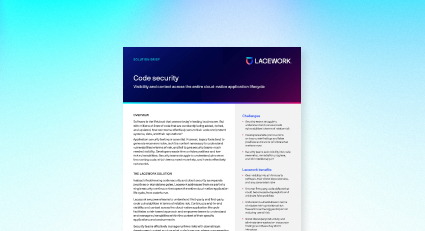What is runtime application self-protection (RASP)?
Table of contents
What is RASP? How does RASP work? RASP use cases RASP vs WAF Benefits of RASP Best practices for implementationImagine a security technology that not only shields applications from cyber threats but does it in real-time. This is what runtime application self-protection (RASP) offers. This forward-thinking RASP security technology embeds itself into the application, identifying and countering attacks in real-time without external security reliance. This piece will offer an in-depth look at RASP, its uses, how it compares to web application firewalls (WAF), the benefits, and implementation best practices.
Demystifying runtime application self-protection (RASP)
At its core, RASP security is an indispensable part of modern application security. It focuses on real-time protection at the runtime level, identifying and preventing attacks. Unlike conventional security measures like firewalls and intrusion detection systems which focus on perimeter defense, RASP integrates security controls within the application itself. This unique approach affords it deep insight into the application's behavior, enabling it to detect and block attacks in real-time.
As cyber threats evolve, traditional security measures are no longer sufficient. The proactive approach of RASP enables real-time threat detection and response, preventing potential damage. In addition to real-time threat detection and mitigation, runtime application self-protection offers protection against various attacks, including injection attacks, cross-site scripting (XSS), and remote code execution, with minimal false positives.
Decoding RASP functionality
RASP is an advanced security technology that operates by continuously monitoring the application's behavior at runtime, identifying potential security vulnerabilities or malicious activities. A key component of RASP security is the security agent embedded within the application's code. This agent is the first line of defense, scrutinizing all incoming requests and outgoing responses, thereby ensuring real-time threat detection and prevention.
Runtime application self-protection also comes equipped with additional security features like virtual patching and runtime integrity checks. Virtual patching allows applications to be protected against known vulnerabilities without immediate code changes or updates. Runtime integrity checks verify the application's code integrity and detect any unauthorized modifications. In essence, RASP offers comprehensive and proactive security within an application's runtime environment.
RASP in action: Use cases
The advanced security technology of runtime application self-protection can be beneficial in various scenarios. For instance, it offers real-time protection against common application attacks such as SQL injection, cross-site scripting (XSS), and remote code execution. Its ability to embed security controls directly into the application makes RASP ideal for securing applications in cloud and hybrid infrastructures. By leveraging runtime analysis, RASP provides a robust and adaptive security solution that can effectively counter evolving threats.
The RASP vs WAF debate
When it comes to application security, runtime application self-protection (RASP) and web application firewall (WAF) are often compared. While they share a common goal of enhancing application security, their approach and effectiveness differ significantly. WAF is a network security solution that monitors and filters incoming and outgoing traffic to detect and block threats. RASP, on the other hand, embeds security controls directly into the application, offering real-time protection and visibility into the application's behavior.
Combining the strengths of RASP security and WAF can lead to a more robust security strategy. A multi-layered security approach that leverages both technologies can effectively reduce the risk of successful attacks.
The RASP advantage
Runtime application self-protection offers several benefits that enhance application security without impacting performance. RASP improves application security, reduces false positives, and can be seamlessly integrated into existing development processes. Furthermore, RASP's deep visibility into the application's runtime behavior allows it to accurately distinguish between legitimate and malicious actions, thereby safeguarding your applications and data.
Best practices for RASP implementation
For effective RASP deployment, it is crucial to follow best practices. These include ensuring proper configuration and tuning based on the unique requirements of your applications. Regular monitoring and updates are also necessary to maintain optimal effectiveness of RASP security and protect against emerging threats. Furthermore, successful runtime application self-protection implementation involves educating and training your development and security teams, conducting thorough testing to validate the solution's integration with your applications. By adhering to these best practices, you can maximize RASP benefits and protect your applications against runtime threats.
SOLUTION BRIEF
Lacework code security
Understand how the Lacework platform connects code to runtime for superior application security.
Read the brief
This article was generated using automation technology. It was then edited and fact-checked by Lacework.